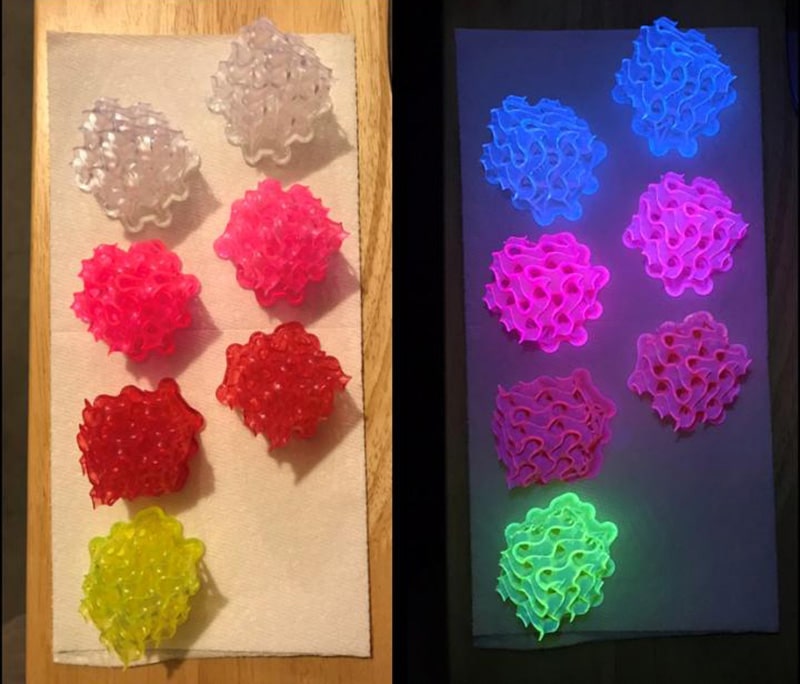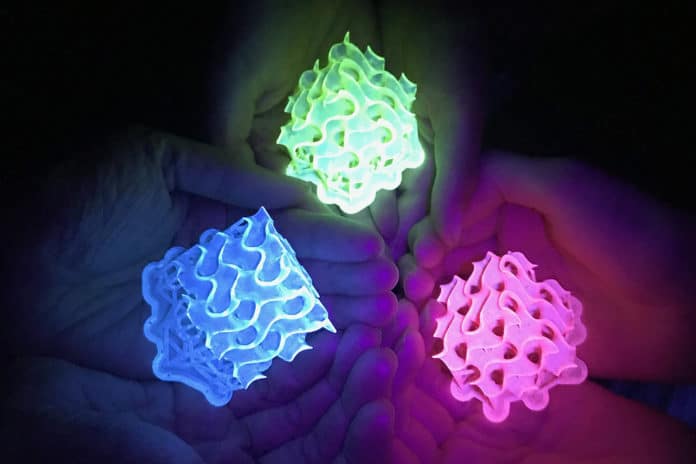Fluorescence is critical to many advanced applications in optical materials, including OLEDs and photonics. Despite their wide-applications, these materials have faced a 150-year-old struggle when it comes to transferring their properties from a liquid solution to a solid, which has limited the fluorescents’ overall use.
A team of scientists at Indiana University and the University of Copenhagen has presented a universal solution to solve this long-standing problem of fluorescent dyes. Instead of trying to improve fluorescent molecules, the chemists have discovered a new material that retains the optical properties of fluorescent dyes.
A new class of materials called small-molecule ionic isolation lattices (SMILES), according to the study, are the “brightest fluorescent materials in existence.” SMILES perfectly transfer the optical properties of highly fluorescent dyes to solid optical materials, crystalline state.
While more than 100,000 fluorescent dyes are available, almost none can be predictably mixed and matched to create solid optical materials. Dyes tend to undergo “quenching” when they enter a solid-state, decreasing the intensity of their fluorescence.

“The problem of quenching and inter-dye coupling emerges when the dyes stand shoulder-to-shoulder inside solids,” says Amar Flood, a chemist at Indiana University and co-senior author on the study. “They cannot help but ‘touch’ each other. Like young children sitting at storytime, they interfere with each other and stop behaving as individuals.”
So, the team developed a solution to the problem based on the separation of fluorescent molecules. Scientists mixed a colored dye with a colorless solution of macrocycle molecules called cyanostars. The use of this star-shaped macrocycle molecule prevents the fluorescent molecules from interacting as the mixture solidified, keeping their optical properties intact. As the mixture becomes solid, “SMILES” formed, which the researchers later turned into crystals, transformed into dry powders, and eventually spun into a thin film or incorporated directly into polymers.
Since cyanostar macrocycles form building blocks that generate a checkerboard in the shape of a lattice, the researchers could simply plug a dye into the lattice and, without further adjustment, the structure would take on its color and appearance.
The researchers found that it works great with several commercially available fluorescent dyes. This means that any fluorescent dye currently available must work with the team’s macrocycle solution to produce a superbly shiny solid material that accurately retains the properties of a liquid dye.
Beyond the striking visual characteristics, the new materials have several potential applications, particularly those where bright fluorescence is needed and also in the field of isolating energy collection, in that of bioimaging and lasers. In particular, they could be used to increase the capture of the solar spectrum in solar panels, light-switchable materials used for information storage and photochromic glass, and circularly polarized luminescence that may be used in 3D display technology.
The researchers plan to explore the properties of fluorescent materials formed using this novel technique to take advantage of the full potential and applications. “These materials are totally new, so we do not know which of their innate properties are actually going to offer superior functionality,” says Flood.
“We also do not know the materials’ limits. So, we will develop a fundamental understanding of how they work, providing a robust set of design rules for making new properties. This is critical for putting these materials into the hands of others-we want to pursue crowdsourcing and to work with others in this effort.“
Journal Reference:
- Plug-and-Play Optical Materials from Fluorescent Dyes and Macrocycles. DOI: 10.1016/j.chempr.2020.06.029
